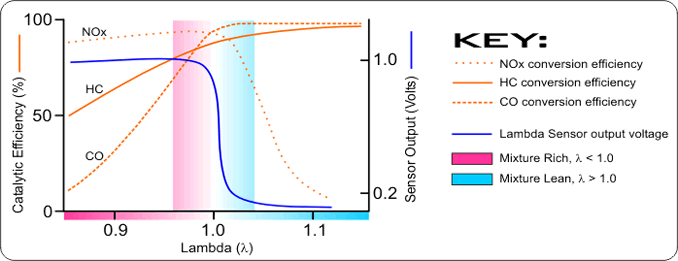 Page 4
Page 4
Lambda Switching for Narrowband Sensors
The lambda sensor gauges the efficiency of combustion by measuring the amount of oxygen in the exhaust gas, giving a voltage output representing this amount.
At the point of most efficient combustion, the voltage takes a large step down, which signals to the ECU that this so-called 'stoichiometric point' has been passed through.
The lambda voltage can be seen from the blue line on the graph. The stoichiometric point is where the blue voltage line takes a large drop down.

Figure 6- The effects of mixture strength on Lambda Voltage and Cat Efficiency
The graph also shows how the efficiency of the catalytic converter is affected by the mixture (orange lines). A correctly functioning lambda sensor will allow the voltage to cycle up and down around the central point. (This range of movement is represented by the coloured bands at the centre). This will send the mixture first rich then lean again rapidly. This gives the catalyst favourable conditions to do its job properly.
Any defect in the sensor's operation will have a detrimental effect on engine performance, and ultimately could lead to catalyst damage, and a failed MOT emissions test.

